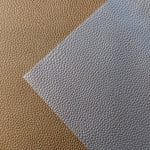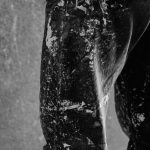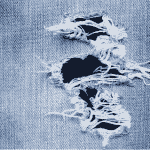The demand for consumer products rises as the world’s population grows, resulting in more landfill space. Not only are available natural resources being depleted, but the environment is also deteriorating. It is imperative that products must be recycled and reused. Denim clothing has become an essential part of everyone’s wardrobe. Denim recycling transforms it into useful, unimaginable, and innovative products.
For a variety of reasons, recycled denim is adorable. It is primarily constructed from scrap post-industrial denim fabrics. Furthermore, the energy used to convert raw materials into products is less than the energy used to recycle old materials.
Is it possible to recycle old Denim?
If you’re wondering if old denim can be recycled, it can, just like many other types of clothing. Some cities and towns have publicly or privately recycling facilities that will accept and recycle your used textiles. Some places, unfortunately, do not.
Do a quick internet search for textile recyclables or drop-off locations in your community to see if there are any nearby recycling facilities or bins.
Is denim environment friendly?
Like much of our clothing, denim production can be costly to the environment and those associated with its production. There are numerous issues along the way, from farming the cotton needed to weave the fabric to sewing and finally receiving the finished products in our hands.
Challenges in recycling denim:
Textile, including denim recycling, faces numerous challenges, despite its growing popularity. The following are the essential factors in textile recycling optimization:
Economic viability: Several recycled textile wastes are impractical for recirculation and usage due to the extensive production of low-quality goods from textile recycling. So, denim recycling is discouraged because limited recirculation and recycling aren’t economically viable.
Ineffective coordination, standards, and policies: Barriers to effective recycling include uncoordinated waste collection and the lack of a well-coordinated and integrated framework and policies to improve overall textile recycling efficiency.
Technology Limitations: The lack of technology solutions for sorting textile waste in order to prepare for recycling is among the main reasons for the low supply of recyclable materials. Many existing methods cannot separate dyes and other contaminants from the original fibers.
Specific denim recycling challenges and constraints:
Specific to denim recycling processes, there are some constraints and challenges. It takes a long time and effort to collect and sort worn-out jeans. Before shredding, labels, metal parts like zippers, rivets, buttons, and leather patches must be manually removed from the jean.
Any metal parts on the recycled jean could cause issues with the machinery and process. The metal and leather parts are usually removed, but the labels are more difficult to remove, so jeans are sent along with them. As a result, because the labels are made of other materials, they contaminate the recycled denim.
Denim jeans have solid lapped seams, which may lead to issues during the carding and shredding processes. Another issue is the presence of elastane. Separating it before cutting and shredding is more convenient. However, this can only be possible through chemical recycling.
When different colored jeans recycle together, you get a multicolored yarn, which can cause dyeing issues. Recycled fibers may not be as good as virgin fibers and may not be able to be spun or appropriately woven.
Ways to upcycle your Denim:
There are numerous ways to recycle denim, but I have shared here only the effective ones:
Make a pair of shorts out of your denim:
This is probably the simplest method of repurposing a pair of jeans. You can turn long jeans into shorts even if you don’t sew. You just need a couple of sharp scissors, plan where you want to cut, and get your new shorts. “Measure twice, cut once,” as the old saying goes.
Turn your old denim into insulation:
Denim insulation does have the highest recycled material of any batt insulation on the market, with 80 percent recycled cotton fibers. It also lacks the chemicals and irritants found in other insulations while providing a number of key benefits for insulating, including being abundant, cost-effective, and durable, as well as superior soundproofing.
Make a reusable bag:
Making reusable bags is one of the best ways to upcycle denim. The bags can be used as a cute way to package a gift, a purse, or a reusable grocery carrier, to name a few uses. You could also make a fun phone charger bag. If you don’t have one, a glue gun or craft glue could be used to complete this task.
Use your old jeans to make a craft supply holder:
Anyone who wants to keep all of their craft supplies in one place will love this idea. Include washable markers, safety scissors, coloured pencils, and glue sticks to create a kid-friendly craft supply holder. If you add a handle, this can be a great way to transport craft supplies on the go.
Make beautiful jewellery from upcycled denim:
Denim scrap, flat seams, strips of denim, waistbands, belt loops, and other parts of your jeans will be left on the floor when you cut them up as a doorstop, upholstery fabric, or even a change purse. These are the ideal components for creating eye-catching upcycled jewellery. To make them, all you’ll need is a needle and thread as well as some jewellery-making earring hooks.
Some cute friendship bracelets from your old denim:
Upcycling material, such as denim can be turned into friendship bracelets. You can express yourself and make each bracelet a unique work of art. Gather your materials, including embroidery floss, fun buttons, and any other embellishments you have on hand. And then cut denim into strips. After that, the real fun begins. Now you can use your imagination to come up with some cute ways to personalize your friendship bracelets.
Conclusion:
So, we conclude from this guide that denim can be recycled. You can take services from any textile recycling centre. But denim recycling process involves some challenges, such as economic viability, technology limitations, and many others. Therefore, it is recommended that you upcycle your denim products by using the above-mentioned ways.






